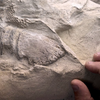Revisiting the Black Sea Deluge Hypothesis

Noah's Ark on Mount Ararat by Simon de Myle.
Across many of the world’s religions, a story crops up again and again: a world-destroying flood sent by a wrathful deity, and the one man chosen to build a ship and survive the storm. In the English-speaking world, we are most familiar with the Genesis narrative and Noah’s Ark, itself likely drawn from a similar episode in the Epic of Gilgamesh, but the story also appears in Hindu traditions and others across the world. Such a flood cannot be reconciled with scientific reality, but it has been suggested by researchers that a smaller event inspired the initial legends that then radiated out across the world through different storytelling traditions.
The Black Sea Deluge Hypothesis suggests that 8,400 years ago, rising sea levels in the Mediterranean spurred by the end of the last Ice Age spilled over into the Black Sea via the Bosporus Strait. The resulting catastrophe could have spurred those living around the Black Sea to migrate out across Europe and Asia, bringing the story of an apocalyptic flood with them. Dr. William B. F. Ryan and Dr. Walter C. Pittman III, who originated the theory, also suggested that these refugees may have brought advanced farming techniques with them, as such developments in agriculture roughly line up with the proposed flood.

The Black Sea today. If Ryan and Pittman's theory is correct, the sea was flooded through the Bosporus Strait, where Istanbul is today.
When Ryan and Pittman first announced their findings in 1996, the theory was met with much excitement from the general public and interested skepticism from the scientific community. The existence of a Black Sea flood is generally accepted, although other models suggest a smaller, earlier spillover from the Caspian Sea. This theory is not compatible with the Black Sea Deluge inspiring the Epic of Gilgamesh or the advancement in farming, as was suggested by Ryan and Pittman. The idea remains controversial, with any study of a real-world flood inspiration threatening to veer into the realm of pseudoscientific Biblical archeology.
There are other theories to the origin of the flood narrative and its pervasiveness across many cultures. Nearly all civilizations originated in fertile river valleys that relied on farming for survival–in such a settlement, a flooding of the local river would be catastrophic, so perhaps different civilizations created an apocalyptic narrative around this motif. The ancient Greeks and other civilizations may have been inspired by finding aquatic fossils at high elevations, another possible explanation. As in all things, it is most likely that some combination of these factors and others came together to form the flood narrative, a motif that presents itself across many civilizations separated by great distances and gulfs of time.
Featured Product
Joe Frazier Boxing Glove
Cool Things!

Is “Paul is Dead” Dead?: Unpacking One Of Pop Culture’s Most Enduring Conspiracy Theories

Scientists Discover Hooves and Skin in Preserved Dinosaur "Mummies!"
A dinosaur discovery just in time for Halloween! In a new analysis of a group of fossils from Wyoming, Scientists have determined this group of fossils are dinosaur “mummies,” with preserved skin and even hooves.

Scientists Record a Bat Catching Birds Mid-Flight!
Bats, birds, screeches, oh my! In a reverse-Hitchcock twist, a new study reveals that a species of European bat catches and eats birds mid-flight.
Specimen Deep Dives

The House that Ruth Built: The Story of the Old Yankee Stadium

The Queen of the Skies: the Story of the Boeing 747

Old Ironsides: The USS Constitution and the Start of the U.S. Navy
Long Form Articles

The Artist Behind the Macintosh: Susan Kare and Apple Computers
While the two Steves, Jobs and Wozniak, are the most well known faces behind Apple computers, equally important to the products and culture of the company were those who crafted the experience of using their computers through design. The most notable of these visual architects was Susan Kare, a designer responsible for “humanizing” Macintosh computers.

Can I Lick It? Yes You Can!
Have you ever been unable to tell if a fossil was really a fossil, but you were too embarrassed to admit it? Have you ever wanted to lick a fossil just because, but you didn’t want to risk judgment from your peers? Well, good news! You can kill two birds with one stone! Licking a fossil can actually help you determine if it’s the real deal or just another rock.

Is It Legal To Own a Meteorite: How to Start Your Outer Space Collection!
Meteorites are some of the rarest geological specimens to be found on Earth. Of course, since these stones are not of our world, purchasing them can sometimes be a confusing process. Is it legal to own a meteorite? In short, yes! Read on for help starting your cosmic collection!


















